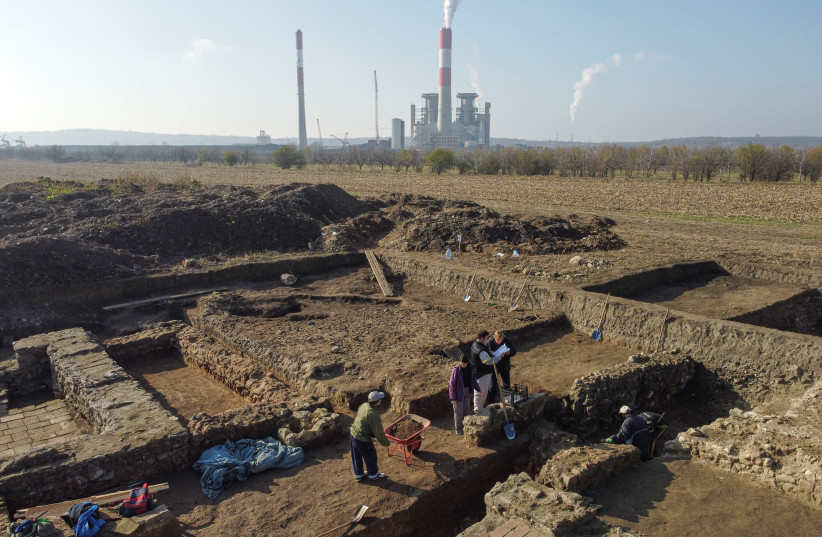Archaeologists were able to identify the remains of an ancient Roman fort in a new discovery aided by combing through old literature.
Spikes from the fort were excavated by archaeologists, and it is thought that the damp soil in Blöskopf helped to maintain the wooden structures, which would have deteriorated in other locations.
Professor Markus Scholz, from Goethe University in Frankfurt, led the team of archaeologists to excavate the structure.
The Roman fort
The fort had a downward tapering ditch that would have surrounded a military camp. The wooden spikes, which were recovered by the archaeologists, added an additional layer of protection for the camp.
The fort’s discovery was enabled through a previous discovery of two Roman military camps, found by Dr. Peter Henrich of the General Directorate for Cultural Heritage of the German federal state of Rhineland-Palatinate. The Roman camps once had 40 wooden towers and had once been considered solid buildings that housed around 3000 soldiers.

Based on previous archaeological finds in the area, it is believed that Romans mined silver ore there and the fort was built to protect the source of potential wealth.
The camp was not completely intact and had been destroyed by fire. Archaeologists believe that writings from the historian Tacitus might explain this. He wrote that in 47 AD, attempts to mine the ore were unfruitful. So, there was little value in continuing a presence in the region or protecting the mines from potential invaders.
A few centuries later, during our current time period, 200 tons of silver were found near the Roman site that the Romans had never discovered.
Silver was used to make coins in Rome from the 7th century, according to the website sciencedaily.com. It was a useful currency, during the Roman empire, because the value of gold and silver was widely accepted across the globe.
